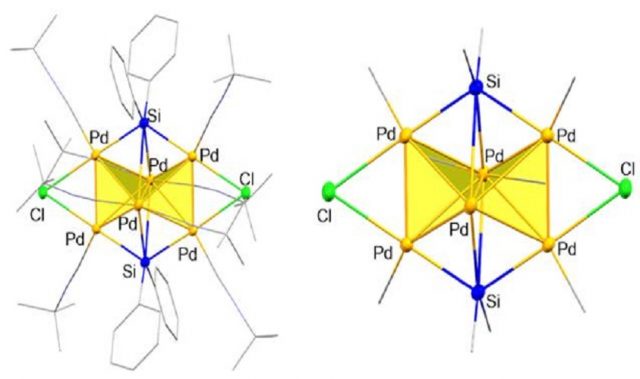
AsianScientist (Jul. 2, 2019) – Scientists have discovered that nanotubes of a special semiconductor material called tungsten disulfide (WS2) can generate electricity in response to light. Their findings, published in Nature, could lead to high-efficiency solar power devices.
Existing solar cells require materials that have a p–n junction, where excess electrons in the n-layer flow to the ‘holes’ in the p-layer. P–n junction-based photovoltaics have improved in efficiency over the 80 years or so since their discovery. However, they are getting close to their theoretical limits due in part to their need for the arrangement of multiple materials.
Instead of using materials with a p–n junction, a team of researchers led by Professor Yoshihiro Iwasa of the University of Tokyo exploited the asymmetrical nature of the WS2 nanotubes to generate electricity from light via the bulk photovoltaic effect (BPVE).
The current-inducing nanotube is made from rolled-up sheets of WS2. The sheets do not induce a current in the presence of light unless rolled into tubes. However, other nanotubes such as carbon nanotubes cannot exhibit BPVE as their symmetry means that the induced current would not have a preferred direction and thus would not flow, even though carbon nanotubes are good conductors of electricity.
“Our research shows an entire order of magnitude improvement in efficiency of BPVE compared to its presence in other materials,” said Iwasa. “But despite this huge gain, our WS2 nanotube cannot yet compare to the generating potential of p–n junction materials. This is because the device is nanoscopic and will be difficult to make larger. But it is possible and I hope chemists are inspired to take on that challenge.”
In the long term, researchers hope this kind of material could allow fabrication of more efficient solar panels. But given the foreseeable size constraints in the near term, it’s more likely to find use in other applications. BVPE could be used to create more sensitive and higher-fidelity optical or infrared sensors. These have further applications in embedded monitoring devices, sensor-laden self-driving cars or even in the imaging sensors for astronomical telescopes.
“My colleagues from around the world and I eagerly explore the potential of this unprecedented technology,” said Iwasa. “For me, the idea of creating new materials beyond anything nature could provide is a fascinating reward in its own right.”
The article can be found at: Zhang et al. (2019) Enhanced Intrinsic Photovoltaic Effect in Tungsten Disulfide Nanotubes.
———
Source: University of Tokyo.
Disclaimer: This article does not necessarily reflect the views of AsianScientist or its staff.












